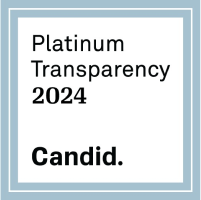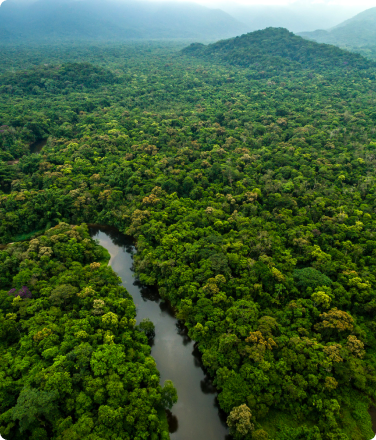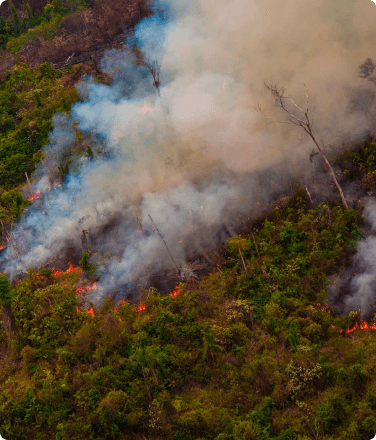Indigenous leaders from Brazil during Climate Week 2022 in NYC.
IMAGE CREDIT: Rachel Elkind /GATC
The United Nations Intergovernmental Panel on Climate Change (IPCC) has emphasized that humanity is faced with the impacts of irreversible climate collapse unless we act immediately to transform global systems and reduce greenhouse gas emissions. However, with political changes in rainforest countries, and at times seemingly arbitrary and confusing initiatives underway, it can be challenging to keep abreast of the latest developments that most impact the world’s rainforests. This article focuses on six key areas to keep your eyes on this year.
1. Brazil: Can New Leadership Prevent the Amazon Rainforest From Reaching Its Tipping Point?
The tipping point for the Amazon is no longer a distant possibility, but a present reality in some parts of the bioregion. Scientists have warned that when deforestation and degradation combined exceed the threshold of between 20% and 25%, the world’s largest rainforest will lose its ability to bounce back, and large areas will turn into a dried-out, savannah like ecosystem—with much less biodiversity. Savanization is already taking place in the Amazon rainforest of Brazil and Bolivia.
After years of forest destruction, new leadership in Brazil—including newly elected President Lula da Silva—restores hope for the Amazon rainforest. Lula has vowed to protect the rainforest and stop deforestation. On his first day in office, he appointed Amazon defender Marina Silva as Minister of Environment and indigenous leader Sônia Guajajara as Minister of Indigenous Peoples. But with a Congress dominated by Bolsonaro’s rightwing allies, will Lula be able to defend the Amazon from the interests of agribusiness and extractive industries?
2. Global Carbon Markets: Helpful or Harmful?
World leaders took a controversial step in Sharm El-Sheikh, Egypt late last year during the UN Conference of Parties (COP27), towards implementing Article 6 of the Paris agreement—which regulates carbon trading between countries.
But what are carbon markets and why are they controversial?
Compliance carbon markets are systems that allow countries, companies, and individuals to buy and sell permits that represent the right to emit a certain amount of carbon dioxide (CO2) or other greenhouse gasses, and only work when there are caps set for emissions. The voluntary carbon markets create carbon credits that are generally used for corporate social responsibility. The idea is to put a price on carbon emissions and encourage people to reduce their emissions in order to save money and help address climate change. The goal is to limit the overall amount of greenhouse gas emissions and to encourage the development and use of cleaner, low-carbon technologies.
International carbon markets have faced criticism for often ignoring the rights of indigenous peoples, and they are inherently built on unequal power dynamics between countries and the role of middle men, and could enable polluters to continue business as usual through carbon offsets. For example, in Guyana, US oil giant, Hess, bought USD 750 million in carbon credits to “offset” their emissions, raising alarm bells among indigenous peoples whose forests are being used to greenwash oil operations without their consent.
3. The “30 x 30” Plan from COP15: Can it Reduce Biodiversity Loss?
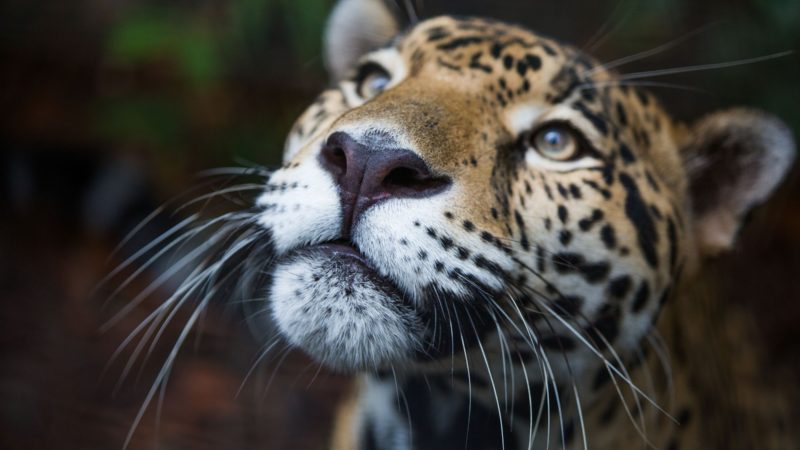
At the COP15 Biodiversity Summit in Montreal, 196 countries agreed on the Global Biodiversity Framework (GBF), which features a “30 x 30” plan to conserve 30% of their land and 30% of their aquatic areas by 2030.
While this may seem promising at first glance, NGOs and indigenous organizations across the world have raised concerns that there is no scientific evidence to support the arbitrary 30% target for reversing biodiversity loss. In fact, designating protected areas could result in widespread human rights violations, displacement, and increased marginalization of the millions of people who live in biodiversity hotspots.
The final agreement—after receiving much resistance and criticism—includes crucial safeguards for indigenous peoples’ rights, including respecting their Free, Prior and Informed Consent (FPIC), a major international human rights instrument. That said, the deal still fell short of explicitly recognizing these lands as counting towards conservation targets, thereby moving against the overwhelming evidence that the preservation of biodiversity is most effective when the lands and rights of those who rely on it are protected.
4. Will COP28 Put People and Planet Over Profit?
Hundreds of world leaders attend the UN Conference of Parties (COP) every year, but negotiations often fall short, and real change is rarely the result of these agreements. Despite this, a significant advancement for climate justice was achieved at COP27 where countries successfully negotiated a long-sought agreement to create a set of funding arrangements, including a new “loss and damage” mechanism to compensate “developing countries” suffering the destructive impacts of climate change. While there is a plan to establish the loss and damage mechanism, it is still unclear who will pay into it.
All attention is focused on COP28 to guarantee climate justice mechanisms for the disbursement of funds to support nature-based solutions, such as protecting the world’s rainforests. However, beyond addressing the symptoms and partial solutions to the climate crisis, COPs are neglecting to confront the underlying cause of this global issue: the burning of fossil fuels. Meanwhile, these events are facing strong criticism of being co-opted by the fossil-fuel industry. This year’s COP28 will be held in the United Arab Emirates (UAE)—one of the world’s biggest oil exporters—and will be headed by the CEO of state oil giant Abu Dhabi National Oil Company.
5.How Can We Get Climate Financing into the Hands of Indigenous Peoples?
The fate of global forests and the fate of indigenous peoples and local communities’ (IPLCs) are inextricably linked. IPLCs hold more than a third of the world’s intact forests and approximately half of the Amazon rainforests. Yet, a report by Rainforest Foundation Norway reveals that less than 1% of funding for climate mitigation and adaptation has gone to these communities in the past decade.
During the COP26 conference in Glasgow in November 2021, various public and private funders joined forces to make a $1.7 billion IPLC Forest Tenure pledge. This pledge represents a significant change in commitments to increase support for the rights of IPLC lands and resources. Although this pledge is encouraging, it remains uncertain how the funding will be distributed to local organizations and communities.
To address this imbalance, indigenous peoples’ organizations have begun laying out their visions for direct financing mechanisms, including the Shandia Platform and the Mesoamerican Territorial Fund.
6. The Guardians of Tomorrow: Will their voices finally be heard?
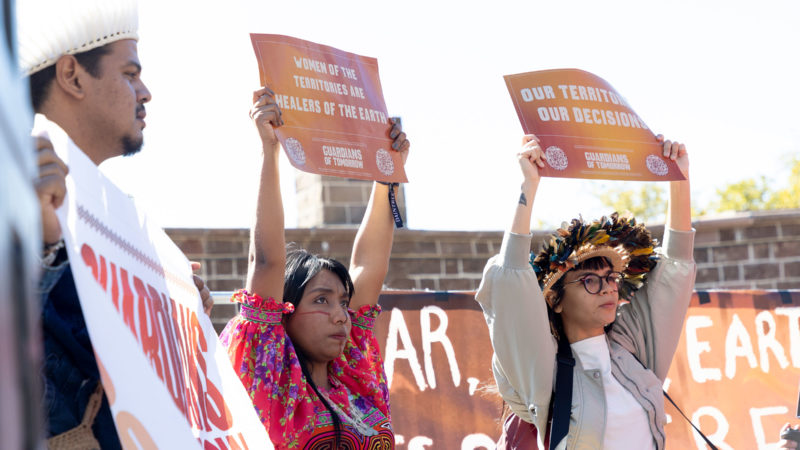
Despite the fact that indigenous peoples around the world are on the frontlines of environmental protection, their stories and contributions to climate change discussions rarely reach international audiences. It’s been scientifically proven that they are the best defenders of the world’s carbon sinks—the forests—and yet, they’re rarely even given a seat at the table during global summits or negotiations where major decisions affecting their livelihoods, their territories, and even their ways of life are impacted.
Structural racism and colonialism have sought to silence the voices of the best environmental advocates, but the climate crisis is a battle that cannot be won without their participation. Will this be the year when indigenous peoples finally reclaim the seat they deserve at the decision-making table?
You can amplify the voices of indigenous peoples by following their stories and taking action to support their efforts to protect our planet.

